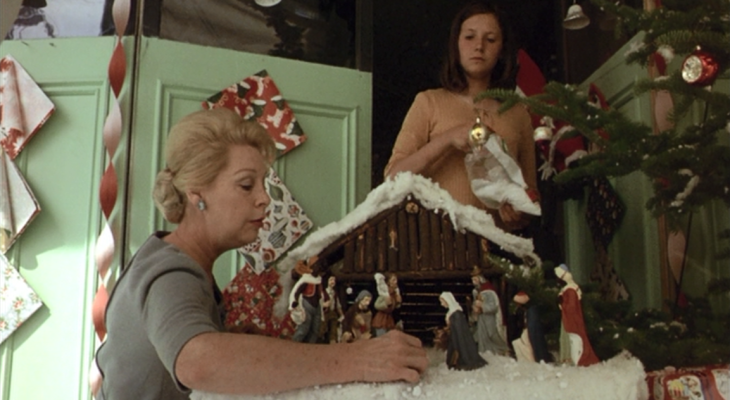
Welcome to The Twelve Ways of Christmas, where we unpack weird and overlooked holiday films. And let’s face it, the blog roll could use the attention.
With little rhyme or reason, check in from now until The Day That Must Not Be Named for a new entry.
Christmas is a time for tradition, when we repeat cultural practices and remake favorite recipes. It’s when what we loved and grew up with as children gets dusted off and revisited for anther year. From a cynical perspective, it’s a rather regressive holiday (just ask the people who made this), a nostalgia-enabling celebration filtered through tinsel-trimmed rose-colored glasses. Take those glasses off, and maybe things aren’t always as rosy as they seemed.
With its foot planted firmly in pre-World War II Québec, Mon oncle Antoine rips off the glasses and stomps them to bits. Told through the perspective of budding teenager Benoit (Jacques Gagnon), Mon oncle Antoine unseats cozy family life right off the bat. Benoit helps his Uncle Antoine (Jean Ducepp) and his wife, Cécile (Olivette Thibault) with their general store, but Antoine, who also doubles as the small town’s undertaker, is getting older and more reliant on the bottle and his deteriorating states of physicality and sobriety leave him dependent on the help of his nephew. When a young boy dies on Christmas Eve, Benoit must accompany his uncle on horse-drawn sled to bring the boy’s body back through the frigid Canadian cold.

Horse-drawn sleds are about as sentimental as Claude Jutra gets in his 1971 slice of life, yet Criterion’s copywriters deem Mon oncle Antoine “a holiday film unlike any other.” They’re technically right. The condensed time frame means everything has misteltoe hanging just above it, it’s just withered mistletoe. Benoit As he hangs Christmas decorations in his uncle’s cornerstore, Benoit’s aggressive flirtations with hired hand Carmen sour into awkward feelings and tears. Later, Benoit and Carmen help Cécile arrange a storefront nativity to help attract Christmas shoppers not biting for one of Antoine’s purported holiday “discounts” only to have the dramatic reveal sullied by a droopy curtain. Benoit seems to be enjoying peeping on the town babe more anyway. Puberty is in full bloom and with adolescence comes the waning of Christmas’ rosy glow, and with Jutra choosing to shoot half of everything in sallow post-dusk light, the sun is setting on adolescence.
With its pre-war setting, Mon oncle Antoine finds a harmonious melancholy in blending Benoit’s coming-of-age with the stranglehold one asbestos miner has on the town and its 1940s proximity to the Asbestos Strike of 1949, often deemed the turning point of mass social and religious progressive change. There’s no comfort to Jutra’s look backward just as there’s no deeper spiritual meaning to the clergyman stripping corpses of their clothing. Expressive zooms and eyeline matches orient things through Benoit’s peeping tom perspective and what’s revealed is far from an ideal portrait. The glasses are off, as they should be. The sun always seems to be setting here anyway.
Way #1: Batman Returns
Way #2: Black Nativity
Way #3: The Gingerdead Man
Way #4: The Ice Harvest
Way #5: Christmas in July
Way #6: Fred Claus
